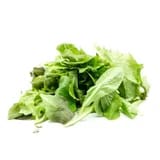Sardine & Cream Cheese Samosas
220 reviewsA gourmet speciality that everyone will agree on!

Ingredients
Make sure you have...
Utensils
Oven, Grater, Baking dish, Parchment paper
recipe

Step 1
Preheat the oven to 200°C. Drain and finely chop the sun-dried tomatoes.




Step 2
Mix the cream cheese, sardines, sun-dried tomatoes and lemon zest in a bowl.
Step 3
Optional: Add some chopped chives
Step 4
Season with salt & pepper and mix.

Step 5
Cut the filo pastry sheets in half. Use one sheet per 2 samosas.

Step 6
Take a half a filo sheet and lightly brush with oil.
Step 7
Divide the cream cheese mixture to make sure you have enough to fill each one: 3 samosas per person. Add a little bit of the mixture on one of the half-sheets.
Step 8
Fold over to start forming a triangle. Continue folding over from top to bottom to form a closed triangle. Continue this process for each samosa.
Step 9
Once the samosas are folded, place them on a baking sheet.
Step 10
Bake at 400°F for 15 minutes.

Step 11
Once they're nice and golden, remove from the oven and serve with a dressed salad. Enjoy!
Personal notes
Add your own flavor!
Nutrition facts
Average estimated amount for one serving
| Energy | 353 cal. |
| Fat | 22 g |
| Carbohydrates | 19 g |
| Protein | 17 g |
| Fiber | 3 g |
Values are based on an average estimate for one serving. All nutrition information presented on Jow is intended for informational purposes only. If you have any concerns or questions about your health, please consult with a health-care professional.
On average, one serving of the recipe "Sardine & Cream Cheese Samosas" contains 353 Energy, 22 g of Fat, 19 g of Carbohydrates, 17 g of Protein, 3 g of Fiber.
Price per portion
| € | Nos recettes à -2 € par portion |
| €€ | Nos recettes entre 2 € et 4 € par portion |
| €€€ | Nos recettes à +4 € par portion |
Please note, the price above is dependent on your grocer and the available products in the grocery store you chose.
Scores


C Nutri-score
The Nutri-score is an indicator intended for understanding nutritional information. Recipes or products are classified from A to E according to their food composition to promote (fiber, proteins, fruits, vegetables, legumes, etc.) and foods to limit (energy, saturated fatty acids, sugars, salt, etc.).
B Green-score
The Green-score is an indicator representing the environmental impact of food products. The recipes or products are classified from A+ to F. It takes into account several factors on the pollution of air, water, oceans, soil, as well as the impacts on the biosphere. These impacts are studied throughout the product life cycle.
Retrieving reviews...


